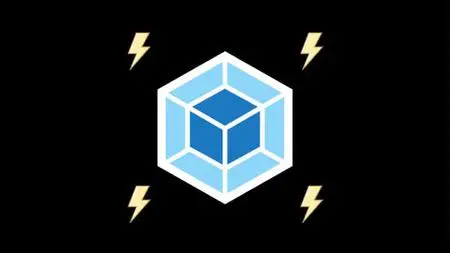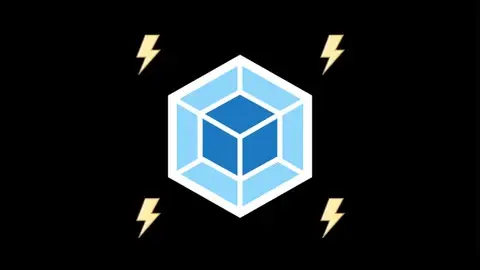Webpack 5: Optimizing For Production
Published 8/2022
MP4 | Video: h264, 1280x720 | Audio: AAC, 44.1 KHz
Language: English | Size: 1.82 GB | Duration: 5h 11m
Published 8/2022
MP4 | Video: h264, 1280x720 | Audio: AAC, 44.1 KHz
Language: English | Size: 1.82 GB | Duration: 5h 11m
Optimize your Webpack 5 configuration for Production with Code Splitting, Lazy Loading, Gzip compression etc.
What you'll learn
Quickly get started, without long introductions and rambling
Optimize your Webpack builds for production to be small and fast
Learn 7 ways of handling CSS in your apps (including CSS-in-JS and CSS Modules)
Everything you need to know about Code Splitting and Lazy Loading
Optimize your CSS and Images for production
Configure Gzip compression and Brotli compression
Set up Babel the right way
Add Source Maps both for JavaScript and CSS
Configure TypeScript with Webpack
Optimize your development experience by enabling Hot Module Replacement, better Error Handling, etc
Requirements
Basics of JavaScript
Basics of CSS
Description
Hi guys and girls, nice to see you here :) This is my 2nd course about Webpack, and this time my goal is to help you understand how you can optimize your Webpack configurations for production use cases. In this course we are going to focus on how to make your Webpack bundles as small as possible, and how to make your application loading times as fast as possible.This course is specifically designed for those people who already know some Webpack basics, and want to become experts in creating optimized Webpack configurations from scratch as well as improving existing Webpack configurations.In this course we are going to take an existing web application that's not using any kind of module bundlers, and apply various Webpack features in order to optimize this application and improve its loading performance. This means you will see how Webpack works in real world use cases. Each lesson builds on top of the previous ones, so it’s very easy to follow.Here are just a few examples of what we are going to talk about.In one of the sections, I will show you 7 different approaches of handling CSS in your applications, including CSS Modules and a couple of CSS-in-JS libraries. As a result, you will become familiar with many approaches and you will be able to choose the most suitable one for your specific needs.In another section, we are going to have a long discussion about Code Splitting. Webpack is extremely good at Code Splitting, and we are going to talk about that a lot in this course. I will show you multiple Code Splitting strategies you can apply, and we will even define our own strategy applicable to the application we are developing in this course. After watching this course you won't ever be frustrated when you hear the words "Code Splitting" again.Also, we are going to cover topics related to Tree Shaking, Lazy Loading, Compressing generated bundles, and many more! After watching this course you will definitely have some ideas on how to improve performance of your existing web applications. I can also promise that you will know more about Webpack than the average Front End Developer in your company.I am regularly updating this course, so you can be sure that this course is always up-to-date and covers the latest Webpack features.If you have any questions regarding Webpack, feel free to post them in the Q&A section. Many people have already found answers to their questions in Q&A, and I will be more than happy to help you with your questions as well.
Overview
Section 1: Introduction
Lecture 1 Introduction
Lecture 2 What you need for this course
Section 2: Setting Up Webpack
Lecture 3 Setting Up Initial Application
Lecture 4 Integrating Webpack Into The Application
Lecture 5 Default Webpack Configuration
Lecture 6 Separating Code Into Multiple Files
Lecture 7 Different Configurations for Production and Development Builds
Lecture 8 Setting Up Webpack-Dev-Server
Section 3: 7 Ways Of Using CSS With Webpack
Lecture 9 Handling Styles With Webpack
Lecture 10 Using Regular CSS With Webpack. Brief Info About Loaders
Lecture 11 Extracting Generated CSS Into Its Own Bundle
Lecture 12 Generating HTML Based On Your Custom Template
Lecture 13 Removing Obsolete Bundles Before Generating New Ones
Lecture 14 CSS Modules
Lecture 15 Optimizing Your CSS
Lecture 16 Using Less Preprocessor For Writing Your Styles
Lecture 17 Using Sass Together With Webpack
Lecture 18 Using PostCSS
Lecture 19 Removing Unused CSS From The Generated Bundles
Lecture 20 Introduction To CSS-in-JS
Lecture 21 Using JSS
Lecture 22 Using Emotion (Another CSS-in-JS Library)
Lecture 0 Introduction To Images
Lecture 0 Processing Images In Development Mode
Lecture 0 Optimizing Images For Production
Lecture 0 Setting Up Babel Compiler
Lecture 0 Increasing Your Browser Support By Adding Polyfills
Lecture 0 Different Babel Configurations For Different Environments
Lecture 0 Using Experimental JavaScript Features In Your Application
Lecture 0 Setting Up TypeScript
Lecture 0 Source Maps For JavaScript And CSS
Lecture 0 Source Maps For CSS-in-JS Libraries
Lecture 0 How Tree Shaking Works. Simple Example
Lecture 0 Applying Tree Shaking To Our Application
Lecture 0 Adding Bootstrap In Case You Need It
Lecture 0 How To Analyze Bundles Generated By Webpack
Lecture 0 Strategy #1: Extracting Heavy Dependencies Into Separate Bundles
Lecture 0 Strategy #2: Specifying Criteria For Code Splitting
Lecture 0 Strategy #3: Putting node_modules Into Its Own Bundle
Lecture 0 Strategy #4: Creating a JS Bundle For Each Dependency
Lecture 0 Define Your Own Strategy For Code Splitting
Lecture 0 Lazy Loading
Lecture 0 Lazy Loading Of Multiple Modules In Parallel
Lecture 0 Using Async Await With Lazy Loaded Modules
Lecture 0 Why You May Need a Web Server
Lecture 0 Setting Up Express Framework
Lecture 0 Integrating Express Framework Into The Application
Lecture 0 Implementing "Watch" Functionality And Automatic Rebuilds
Lecture 0 Implementing Hot Module Reloading Feature
Lecture 0 GZIP Compression
Lecture 0 Enable GZIP Compression in Express Framework
Lecture 0 Enable Brotli Compression in Express Framework
Lecture 0 Summary
All developers with basic JavaScript knowledge



